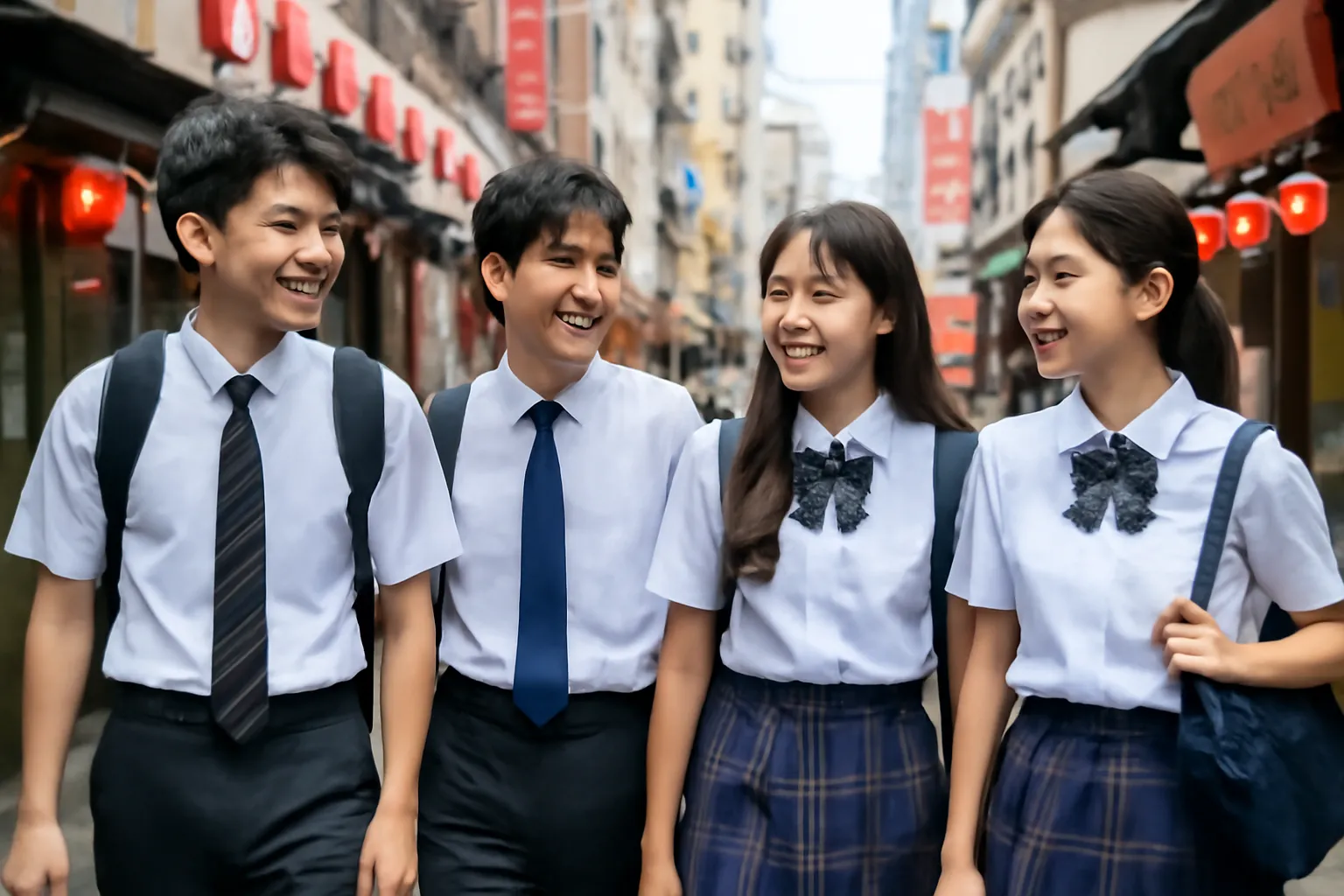Traveling to Japan as a high school student can be an unforgettable experience. However, one of the biggest concerns when planning a trip to Japan is the cost. Whether you’re exploring the vibrant streets of Tokyo or visiting ancient temples in Kyoto, understanding how much money you’ll need for travel expenses is crucial. In this guide, we will break down the different aspects of Japan travel for high school students, including travel expenses, tips for an affordable trip, and options for free or discounted travel.
Are you a high school student planning to visit Japan? Wondering about the cost? Discover all you need to know about travel expenses, tips for a budget-friendly trip, and opportunities for free travel in Japan. Read on to make your dream trip a reality!
High School Student Japan Travel Expenses
Traveling to Japan from abroad as a high school student can be a little more expensive than domestic travel, but with careful planning, it can be quite affordable. Understanding the types of expenses you’ll encounter can help you budget properly. Let’s dive into the key factors contributing to the cost of a trip to Japan.
1. Flights and Transportation
The largest expense for most international students traveling to Japan is the flight. Depending on where you’re traveling from, you can expect to spend anywhere between $500 to $1,500 for a round-trip flight. To reduce this cost, consider flying during off-peak seasons or using fare comparison websites to find the best deals.
Once in Japan, transportation within the country is another cost to consider. The Japan Rail Pass can be an excellent way to travel affordably. For 7 days, the pass costs around ¥29,650 (approximately $200), and it allows unlimited travel on most trains throughout Japan. In major cities like Tokyo, metro and bus services are also widely available and typically cost between ¥150 to ¥500 per ride, depending on distance.
2. Accommodation
Accommodation prices vary depending on the type of lodging you choose. Budget hotels and hostels range from ¥3,000 to ¥7,000 per night, while staying in guesthouses or capsule hotels may cost even less. If you’re staying with a host family or in a dormitory as part of an exchange program, these costs can be significantly reduced or covered by the program.
For a truly immersive experience, consider staying in traditional Japanese inns (ryokan) for a night or two. These can be more expensive, ranging from ¥10,000 to ¥20,000 per night, but they offer a unique cultural experience.
3. Food and Entertainment
Eating out in Japan can be surprisingly affordable, especially if you stick to local eateries like ramen shops, conveyor-belt sushi, or convenience store meals. Expect to spend around ¥500 to ¥1,000 per meal. Street food is also an affordable and delicious option, with many options like takoyaki and okonomiyaki costing less than ¥500.
For entertainment, popular attractions such as theme parks (Disneyland Tokyo, Universal Studios Japan) charge entrance fees from ¥4,000 to ¥8,000. Museums, temples, and other cultural sites often have low entry fees, ranging from ¥500 to ¥1,500.
Tips for Saving Money on Travel Expenses
-
Look for student discounts Many attractions offer discounts for students, and transportation companies also provide student passes.
-
Use free Wi-Fi Japan offers free Wi-Fi in public areas, so avoid expensive data roaming charges by using public networks.
-
Take advantage of convenience store meals Japanese convenience stores (conbini) offer high-quality, affordable meals, perfect for students on a budget.
Call to Action
Want to know more about how to save on your Japan travel expenses? Click below for more tips!
👉Learn More About Japan Travel Expenses👈
High School Student Japan Travel: Planning Your Perfect Trip
While the expenses are an important factor, so is the planning process for your high school trip to Japan. There are plenty of fun and educational activities to engage in while you’re there. Here’s how to make the most of your travel time in Japan.
1. Explore Major Cities and Cultural Landmarks
Tokyo, Osaka, Kyoto, and Hiroshima are some of the most popular destinations for tourists, but each offers unique cultural experiences. Tokyo is famous for its neon lights, tech districts, and entertainment areas like Shibuya and Akihabara. Kyoto is home to ancient temples, including the Golden Pavilion, and stunning gardens.
If you’re interested in history, Hiroshima offers a deeply moving experience at the Peace Memorial Park, dedicated to those affected by the atomic bomb in 1945. Osaka is perfect for those who enjoy street food and shopping, with districts like Dotonbori being a must-visit.
2. Join School-Related Programs or Exchange Programs
Many schools offer exchange programs that include a student trip to Japan. These programs can provide a more affordable and educational way to visit, as the travel expenses are often subsidized by the school or government. Students who participate in these programs often have the opportunity to stay with a host family, attend school, and participate in cultural activities.
There are also programs designed to improve your Japanese language skills, offering discounted or free activities for students. These are great opportunities to immerse yourself in the culture and language, making the trip even more meaningful.
3. Discover Traditional and Modern Japanese Experiences
Whether you’re in a big city or a small town, Japan offers a balance of modern attractions and traditional experiences. You can enjoy a day at the Tokyo Skytree or visit traditional shrines such as the Fushimi Inari Shrine in Kyoto. If you’re interested in Japanese culture, take part in a tea ceremony or try wearing a kimono. On the other hand, if you’re more into modern attractions, explore the high-tech districts of Tokyo or the video game hubs in Osaka.
Call to Action
Ready to start planning your dream trip to Japan? Check out the link below for more insights and travel guides!
👉Start Planning Your Japan Trip Now👈
High School Student Studying in Japan: A Unique Experience
If you’re planning to study in Japan for a longer period, it’s important to understand the costs and lifestyle changes involved. Many students choose to study in Japan to gain a deeper understanding of the language and culture. Whether you’re attending high school or university, there are some important things to consider.
1. Tuition and Accommodation Fees
For students enrolled in Japanese high schools, tuition fees can range from ¥500,000 to ¥1,000,000 per year, depending on whether you’re attending a public or private school. International students can often apply for scholarships or exchange programs to cover some or all of these costs.
Accommodation costs are generally more affordable compared to short-term trips. Most students live in dormitories or share apartments with others, costing between ¥30,000 to ¥60,000 per month. Meals and daily expenses are typically lower than during a short-term visit, as you will likely be cooking more meals at home.
2. Student Life and Cultural Adaptation
Studying in Japan is a great way to immerse yourself in the culture. Japanese high schools often have unique features such as school uniforms, school festivals, and club activities. You’ll also have the chance to practice Japanese daily, which is one of the best ways to improve your language skills.
However, adapting to Japanese school life can be challenging. Expect to spend time getting used to the strict school rules, such as uniform requirements, limited socializing during class time, and frequent exams. But these challenges are part of what makes studying in Japan a truly transformative experience.
3. Health Insurance and Emergency Expenses
International students studying in Japan are required to enroll in the National Health Insurance system, which costs around ¥1,000 to ¥2,000 per month. This insurance covers medical costs, so it’s important to sign up as soon as you arrive.
Make sure to have additional emergency savings for unexpected costs, such as healthcare or traveling around Japan during school breaks.
Call to Action
Interested in studying in Japan? Find out how you can apply for student exchange programs or scholarships below!
👉Apply for Scholarships and Exchange Programs👈
Conclusion
Japan is an amazing destination for high school students looking to travel, study, or explore new cultures. While travel expenses can add up, there are plenty of ways to save money and make your trip affordable. From budgeting for transportation and accommodations to finding free or discounted travel opportunities, there are many ways to make your dream trip a reality.
Whether you’re visiting Japan for a short trip, participating in an exchange program, or studying long-term, the experience will surely be life-changing. Start planning your adventure today and enjoy all the wonders that Japan has to offer!






